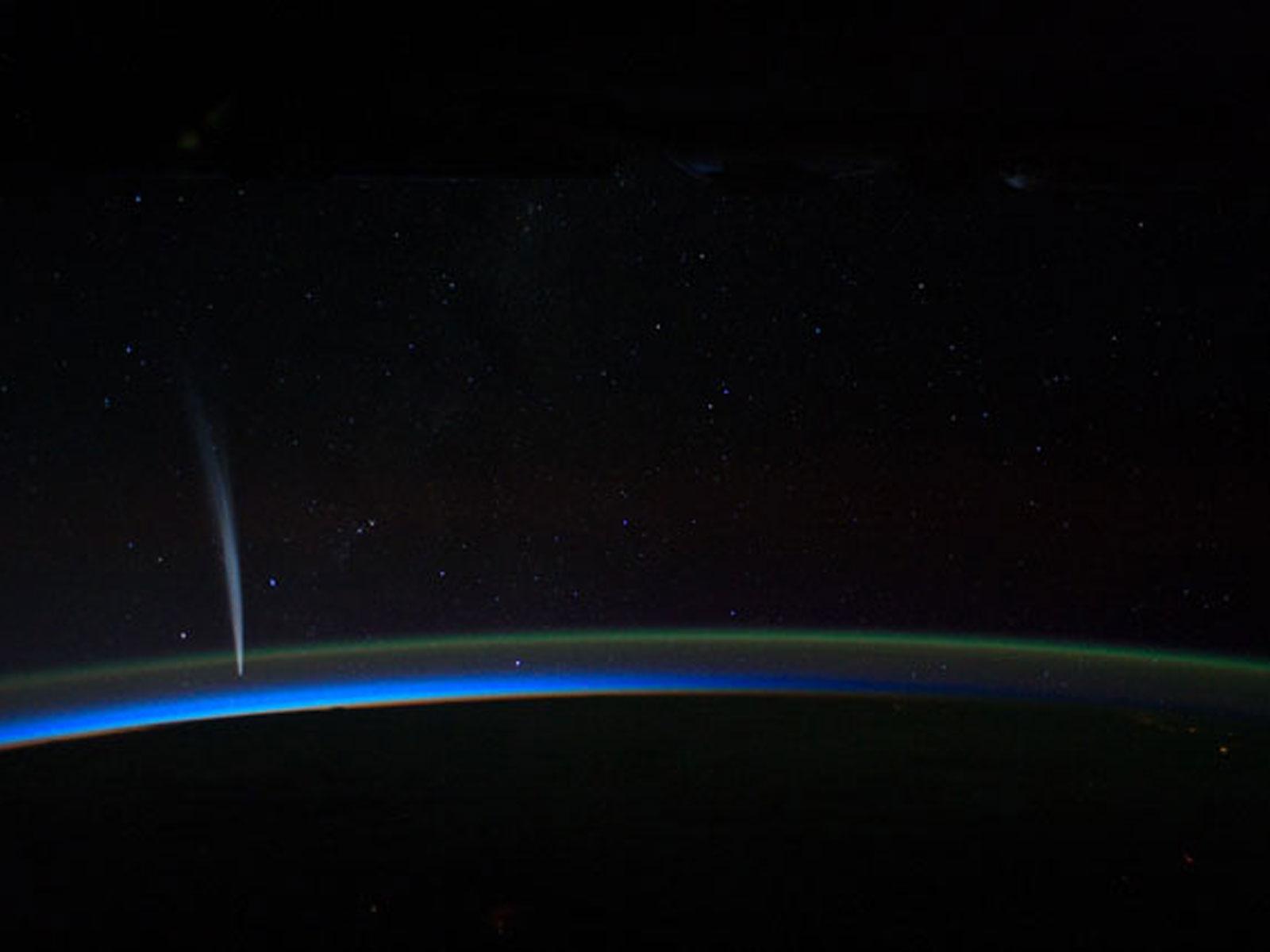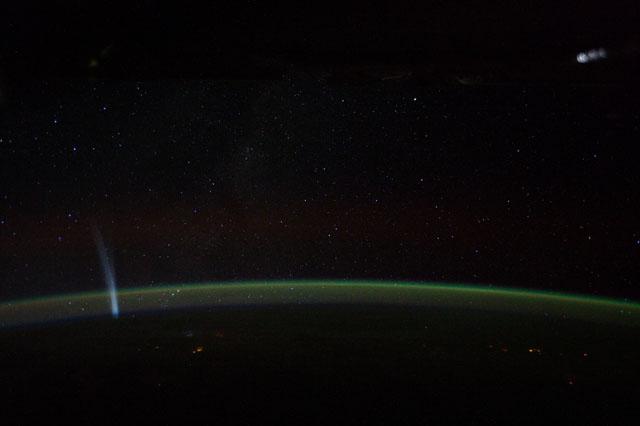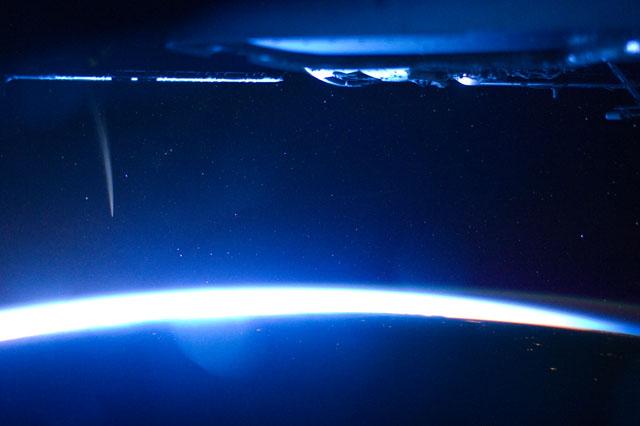Spectacular Photos: Astronaut Sees Dazzling Comet From Space Station

An astronaut living in space has captured an unprecedented view of a comet from orbit in a jaw-dropping set of photos taken over a nighttime Earth.

And even for a seasoned spaceflyer, the sight was amazing to behold.
It was "the most amazing thing I've ever seen in space," Burbank said in a NASA video. "And that's saying an awful lot because every day is filled with amazing things."
Burbank took about 100 photographs of comet Lovejoy as it rose above Earth at night on Wednesday (Dec. 21). At the time, the space station was sailing 240 miles (386 kilometers) above Tasmania, Burbank said. Then the long, bright tail of the comet began rising up from the Earth's horizon.
"I had no idea what it was; it was a long green glowing arc," Burbank said in the video, which was recorded in an interview with WDIV-TV in Detroit. "It turns out that it ended up being a comet." [Astronaut's amazing comet photos and video]
Burbank is in the middle of a six-month mission to the International Space Station. He leads a three-man crew (two Russian cosmonauts round out the team) and is preparing to welcome three more astronauts on Friday (Dec. 23). A Russian Soyuz spacecraft carrying the new crewmembers launched on Wednesday.
Get the Space.com Newsletter
Breaking space news, the latest updates on rocket launches, skywatching events and more!
Comet Lovejoy was discovered on Nov. 27 by Australian amateur astronomer Terry Lovejoy. The comet was estimated to be about 660 feet (200 meters) wide, larger than two football fields, when it was first seen.
The comet was quickly identified as a so-called Kreutz comet, a comet on a path that flies extremely close to the sun. Then, on Dec. 15, comet Lovejoy plunged into the sun's outer atmosphere.
The comet zoomed within 87,000 miles (140,000 kilometers) of the sun's surface, and many astronomers predicted it would not survive such a close solar encounter. But comet Lovejoy defied the odds and re-emerged on the other side of the sun. The event stunned astronomers and was captured by several sun-watching observatories in space.

The swing near the sun did rip comet Lovejoy's tail clean off, but over the last week the comet has grown a new tail of gas blown back by the solar wind.
"When it disappeared behind the sun, I think astronomers thought it would not appear again, it would probably burn up," Burbank said. "But it's probably the most spectacular thing that you can imagine."
You can follow SPACE.com Managing Editor Tariq Malik on Twitter @tariqjmalik. Follow SPACE.com for the latest in space science and exploration news on Twitter @Spacedotcom and on Facebook.
Join our Space Forums to keep talking space on the latest missions, night sky and more! And if you have a news tip, correction or comment, let us know at: community@space.com.

Tariq is the Editor-in-Chief of Space.com and joined the team in 2001, first as an intern and staff writer, and later as an editor. He covers human spaceflight, exploration and space science, as well as skywatching and entertainment. He became Space.com's Managing Editor in 2009 and Editor-in-Chief in 2019. Before joining Space.com, Tariq was a staff reporter for The Los Angeles Times covering education and city beats in La Habra, Fullerton and Huntington Beach. In October 2022, Tariq received the Harry Kolcum Award for excellence in space reporting from the National Space Club Florida Committee. He is also an Eagle Scout (yes, he has the Space Exploration merit badge) and went to Space Camp four times as a kid and a fifth time as an adult. He has journalism degrees from the University of Southern California and New York University. You can find Tariq at Space.com and as the co-host to the This Week In Space podcast with space historian Rod Pyle on the TWiT network. To see his latest project, you can follow Tariq on Twitter @tariqjmalik.









